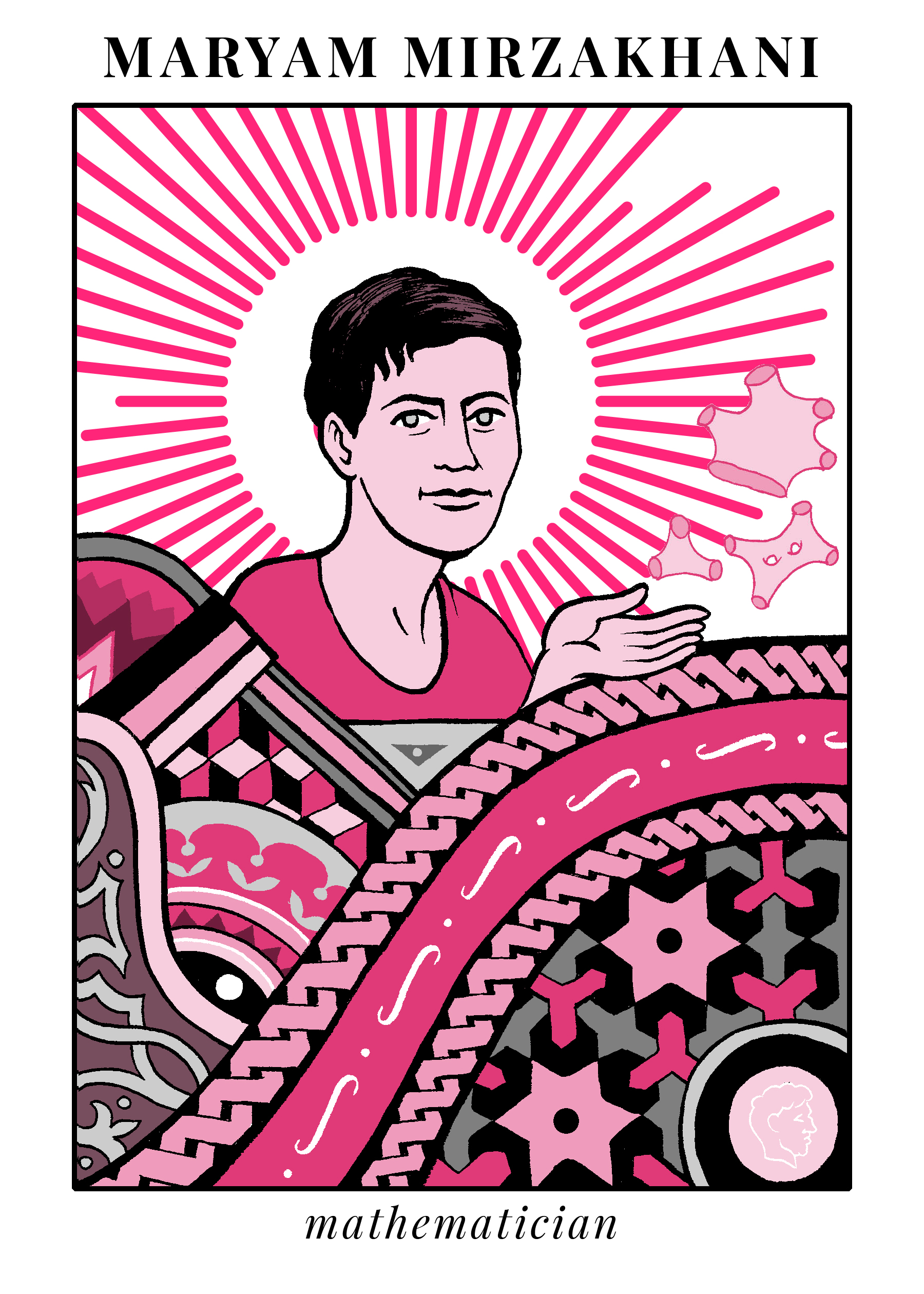
Maryam Mirzakhani’s mathematical legacy lives on
The first woman to win a Fields Medal was only 40 when she died, but she revolutionized mathematics
There was a time, during her early years in Tehran, when Maryam Mirzakhani preferred literature to arithmetic. But by her adolescence, any uncertainty about her academic calling had been cast aside; she was clearly a mathematician.
As a teenager she won two gold medals at the International Mathematical Olympiads for high school students, the second of which was accompanied by a perfect score. Mirzakhani went on to earn a degree in mathematics from Sharif University of Technology in Tehran before moving to the U.S. to pursue her PhD at Harvard under the guidance of Curtis McMullen, a Fields Medal recipient. She would soon follow in his footsteps.

Illustration by Matteo Farinella
Mirzakhani, who died of breast cancer at age 40, was the only woman – and the only Iranian – ever to win a Fields Medal. It’s the most prestigious award in mathematics, akin to a Nobel Prize, and she was honored in 2014 for her work on the geometry of Riemann surfaces and their moduli spaces.
Mirzakhani’s research focused on the dynamics of geometric surfaces. Confusing, theoretical abstractions to most, she had a way with shapes and space, and could understand their complexities to a degree unmatched by most scholars in her field. She even had a knack for making it fun. Perhaps her most relatable work (though still wildly complex) is the “Magic Wand Theorem,” which explains the movement of a billiard ball as it bounces endlessly around a pool table.
Her understanding was so exceptional that her dissertation laid out solutions to two mathematical problems, each of which was noteworthy enough to earn her widespread recognition in the field. She won the Fields Medal at age 37.
However inconceivable her accomplishments may seem, Mirzakhani’s description of the pleasure she took in her arduous work would be familiar to any researcher:
Of course, the most rewarding part is the "Aha" moment, the excitement of discovery and enjoyment of understanding something new – the feeling of being on top of a hill and having a clear view. But most of the time, doing mathematics for me is like being on a long hike with no trail and no end in sight.
Mirzakhani will be remembered for the special relationship she had with invisible boundaries—the ones that encapsulated the geometric shapes she understood like few before her, and the ones she broke when she became the first woman, and first Iranian, to win the Fields Medal. In just four decades, she blazed a trail that will both light the way for future scholars and be a daunting act to follow.
